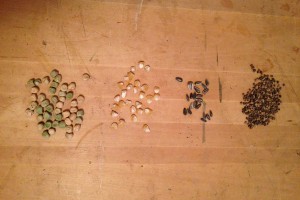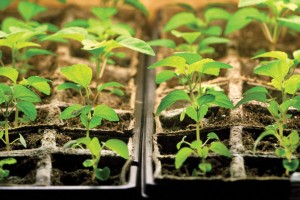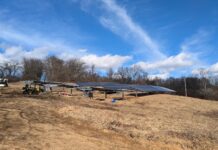One way to get a head start on spring gardening is by starting seeds indoors between late February and April (depending on your area’s climate). This provides gardeners with homegrown seedlings to transplant after the last frost.
Did you know that not all plants should be started indoors? Certain varieties grow well when seeds are started indoors and later transplanted, while other seed varieties grow best when directly sown outdoors. Before you plant seeds, find out which types of seeds should be started indoors and which ones should be directly sown after the last frost.
Vegetable seeds to start indoors

The following seeds typically transplant well, and can, therefore, be started indoors, according to Clemson Cooperative Extension:
- Broccoli
- Brussels sprouts
- Cabbage
- Cauliflower
- Eggplant
- Kale
- Lettuce
- Onion
- Okra
- Pepper
- Sweet potato
- Tomato

- Celery
- Chard
- Cucumber
- Melon
- Peas
- Pumpkin
- Spinach
- Squash
Flower seeds to start indoors
Just like vegetables, annual flower seeds can be started indoors, too.
Purdue University Extension provides a general list of annuals that can be seeded indoors, such as pansies, violets, asters and marigolds. Each flower has specific requirements for how soon they should be seeded. Pansies and violets, for instance, should be seeded about 14 weeks before the last frost, while asters and marigolds should be seeded about six weeks before the last frost.
Your hardiness zone will determine when you need to start indoor seeding and when you can transplant seedlings outside.
Seeds that shouldn’t be started indoors
Clemson Cooperative Extension recommends not starting the following vegetables indoors:
- Bean
- Beet
- Carrot
- Corn
These vegetables should be directly sown after spring’s last frost. The roots of these vegetables can be disturbed during transplanting, causing hindered growth.
Reminders for starting seeds indoors

- Pay attention to seed packet planting instructions. Follow planting soil depth listed on each packet.
- Use fresh seed-starting mix.
- Make sure soil temperature is consistently warm; be careful with fluctuating temperatures, especially if seedlings are grown near windows.
- Place seedlings near south-facing windows.
- Consider using grow lights instead of relying solely on natural light
How to start seeds indoors

Why start seeds indoors?
If you’re not sure whether starting seeds indoors is a task you need to take on, consider Harlow’s advice for being able to choose from more varieties and also for saving money on growing plants.
The University of Maryland Extension says that starting seeds indoors can also increase your garden’s output, decreases pest and weather impact on plants and makes thinning out plants unnecessary.
Related posts:
- Starting seeds indoors: What you need to know
- Infographic: Starting seeds indoors
- DIY seed starting projects
- Get an early start on the spring garden
- How to grow herbs indoors
- How do I grow vegetables indoors over winter?
- Take care of houseplants this winter
Do you start any other seeds indoors? Tell us in the comments below.














Great tips! I’ve been wanting to start my indoor garden this year, and your suggestions for seeds are super helpful. I’m especially excited about trying to grow tomatoes and peppers early. Thanks for the detailed advice!